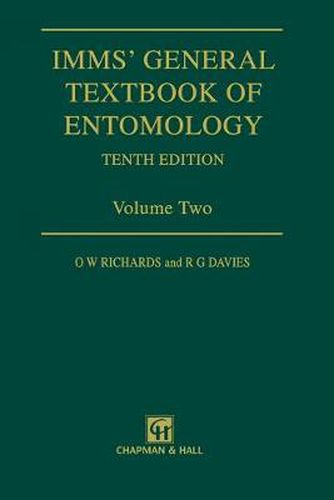Readings Newsletter
Become a Readings Member to make your shopping experience even easier.
Sign in or sign up for free!
You’re not far away from qualifying for FREE standard shipping within Australia
You’ve qualified for FREE standard shipping within Australia
The cart is loading…






This title is printed to order. This book may have been self-published. If so, we cannot guarantee the quality of the content. In the main most books will have gone through the editing process however some may not. We therefore suggest that you be aware of this before ordering this book. If in doubt check either the author or publisher’s details as we are unable to accept any returns unless they are faulty. Please contact us if you have any questions.
seem as appropriate now as the original balance was when Dr A. D. Imms’ textbook was first published over fifty years ago. There are 35 new figures, all based on published illustrations, the sources of which are acknowledged in the captions. We are grateful to the authors concerned and also to Miss K. Priest of Messrs Chapman & Hall, who saved us from many errors and omissions, and to Mrs R. G. Davies for substantial help in preparing the bibliographies and checking references. London O. W. R. R. G. D. May 1976 Part III THEORDERSOFINSECTS THE CLASSIFICATION AND PHYLOGENY OF INSECTS The classification of insects has passed through many changes and with the growth of detailed knowledge an increasing number of orders has come to be recognized. Handlirsch (1908) and Wilson and Doner (1937) have reviewed the earlier attempts at classification, among which the schemes of Brauer (1885), Sharp (1899) and Borner (1904) did much to define the more distinctive recent orders. In 1908 Handlirsch published a more revolutionary system, incorporating recent and fossil forms, which gave the Collembola, Thysanura and Diplura the status of three independent Arthropodan classes and considered as separate orders such groups as the Sialoidea, Raphidioidea, Heteroptera and Homoptera. He also split up the old order Orthoptera, gave its components ordinal rank and regrouped them with some of the other orders into a subclass Orthopteroidea and another subclass Blattaeformia.
$9.00 standard shipping within Australia
FREE standard shipping within Australia for orders over $100.00
Express & International shipping calculated at checkout
Stock availability can be subject to change without notice. We recommend calling the shop or contacting our online team to check availability of low stock items. Please see our Shopping Online page for more details.
This title is printed to order. This book may have been self-published. If so, we cannot guarantee the quality of the content. In the main most books will have gone through the editing process however some may not. We therefore suggest that you be aware of this before ordering this book. If in doubt check either the author or publisher’s details as we are unable to accept any returns unless they are faulty. Please contact us if you have any questions.
seem as appropriate now as the original balance was when Dr A. D. Imms’ textbook was first published over fifty years ago. There are 35 new figures, all based on published illustrations, the sources of which are acknowledged in the captions. We are grateful to the authors concerned and also to Miss K. Priest of Messrs Chapman & Hall, who saved us from many errors and omissions, and to Mrs R. G. Davies for substantial help in preparing the bibliographies and checking references. London O. W. R. R. G. D. May 1976 Part III THEORDERSOFINSECTS THE CLASSIFICATION AND PHYLOGENY OF INSECTS The classification of insects has passed through many changes and with the growth of detailed knowledge an increasing number of orders has come to be recognized. Handlirsch (1908) and Wilson and Doner (1937) have reviewed the earlier attempts at classification, among which the schemes of Brauer (1885), Sharp (1899) and Borner (1904) did much to define the more distinctive recent orders. In 1908 Handlirsch published a more revolutionary system, incorporating recent and fossil forms, which gave the Collembola, Thysanura and Diplura the status of three independent Arthropodan classes and considered as separate orders such groups as the Sialoidea, Raphidioidea, Heteroptera and Homoptera. He also split up the old order Orthoptera, gave its components ordinal rank and regrouped them with some of the other orders into a subclass Orthopteroidea and another subclass Blattaeformia.